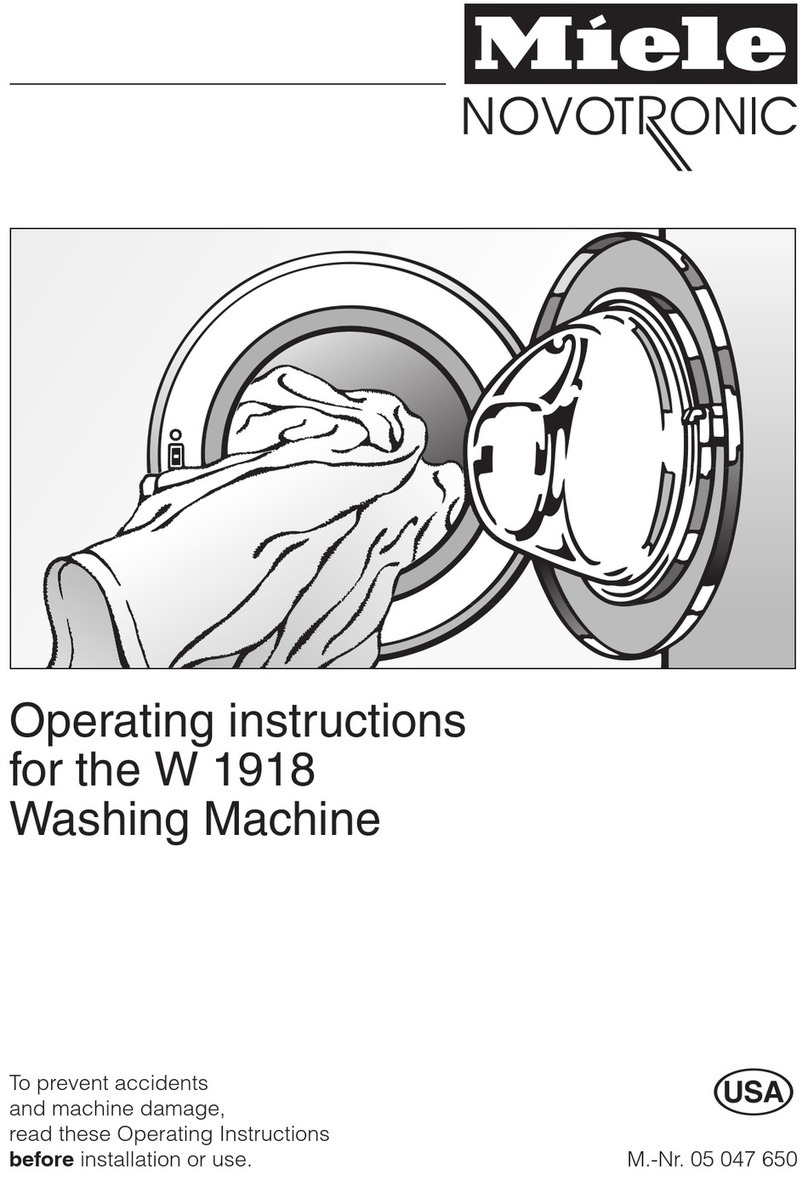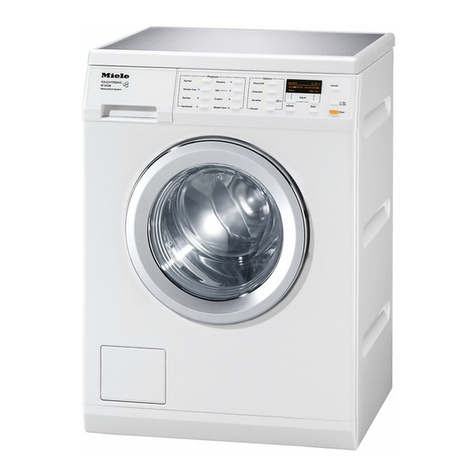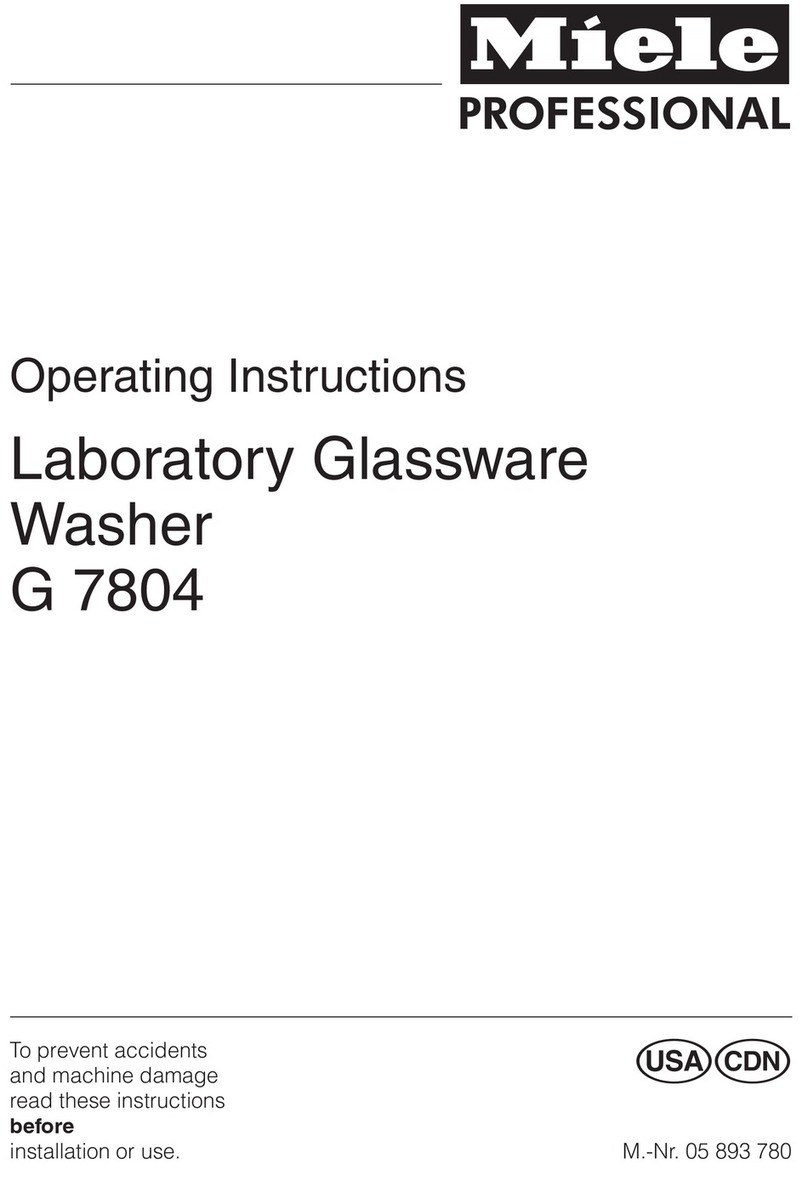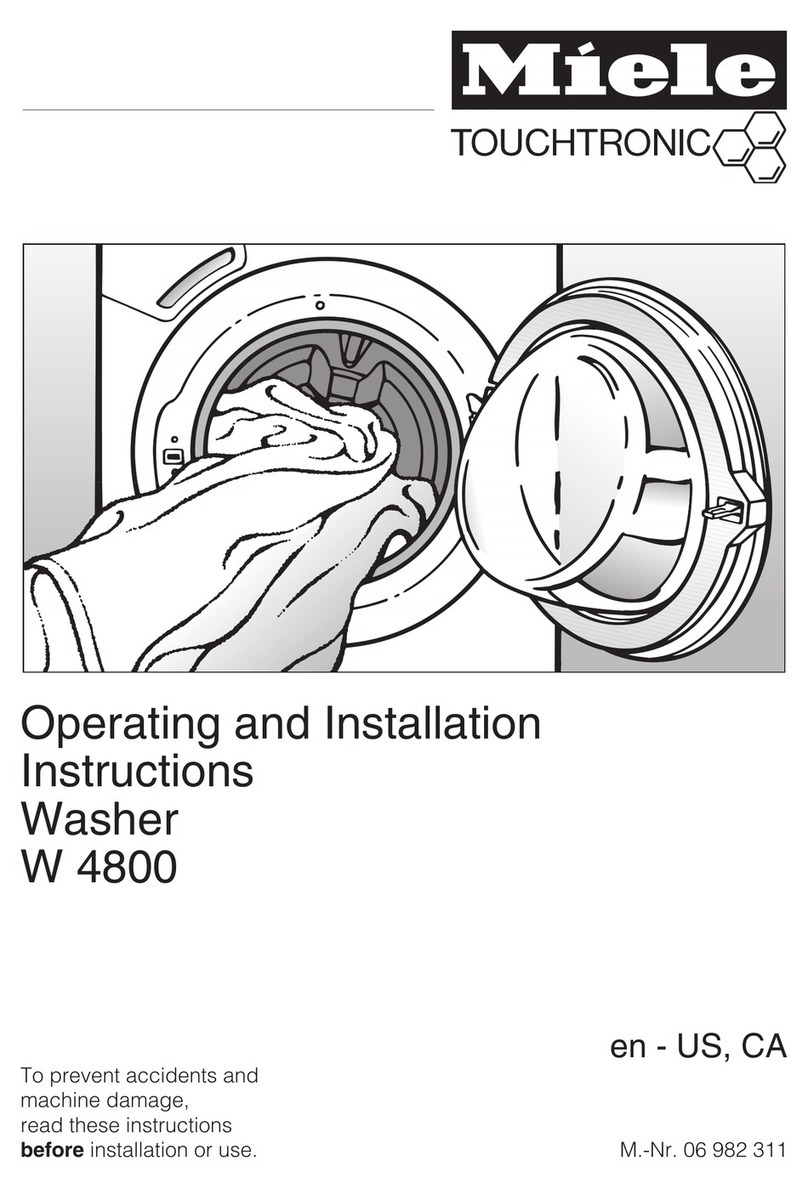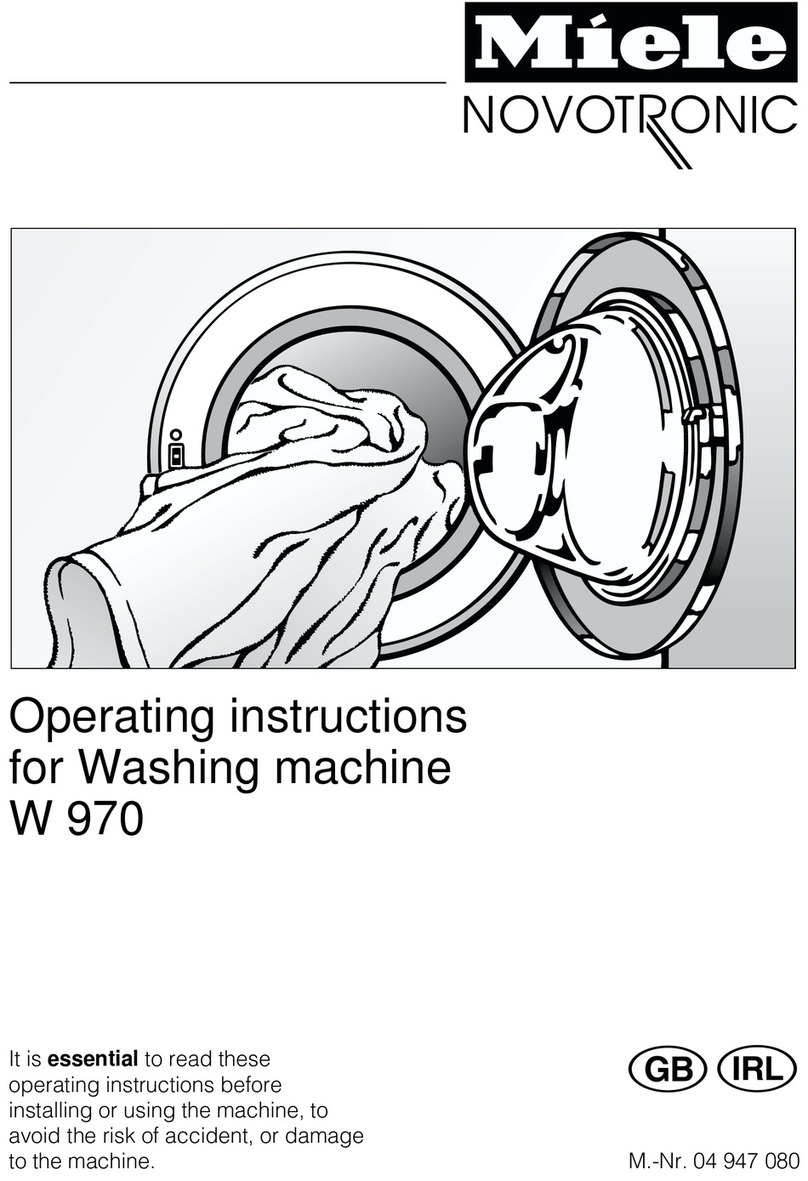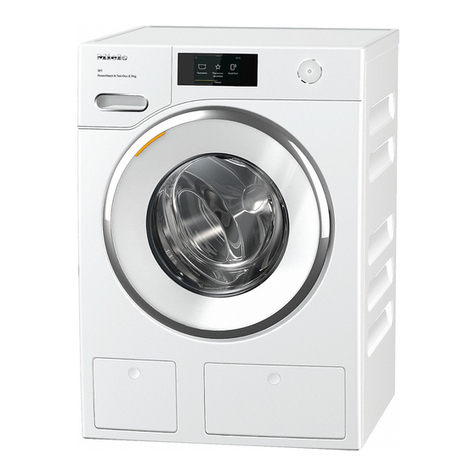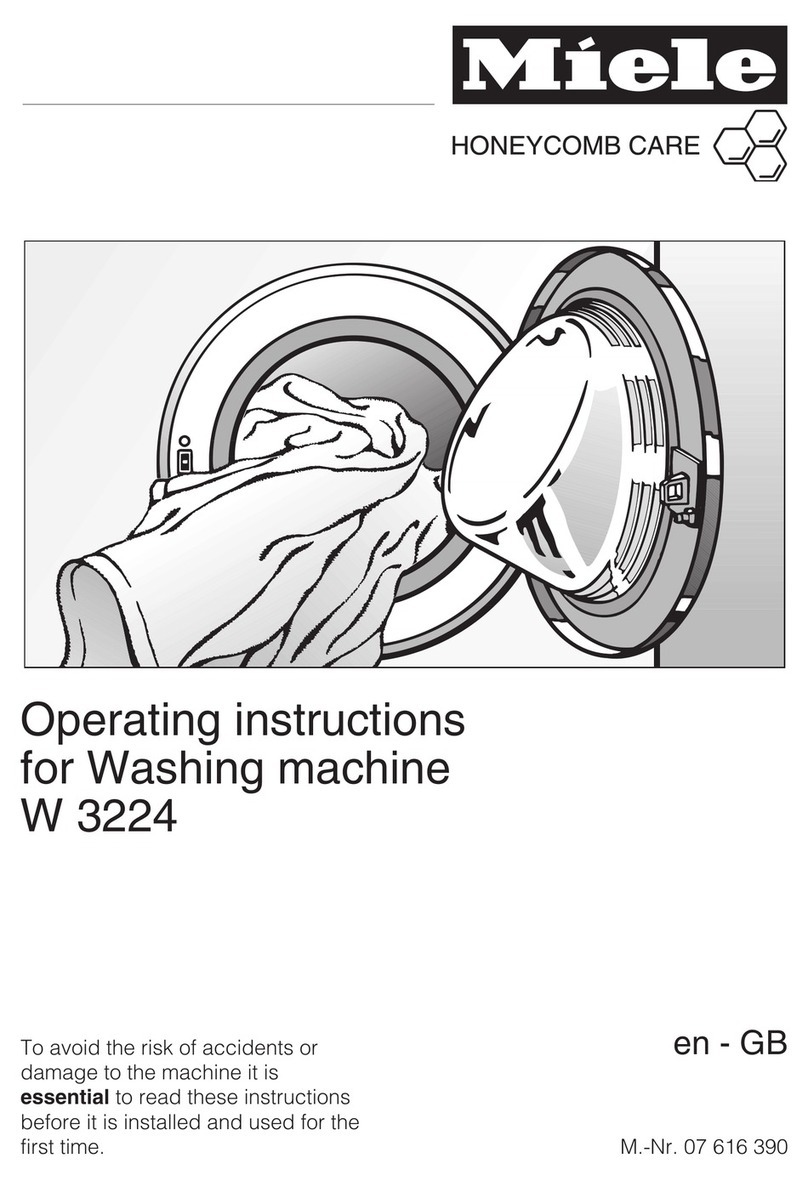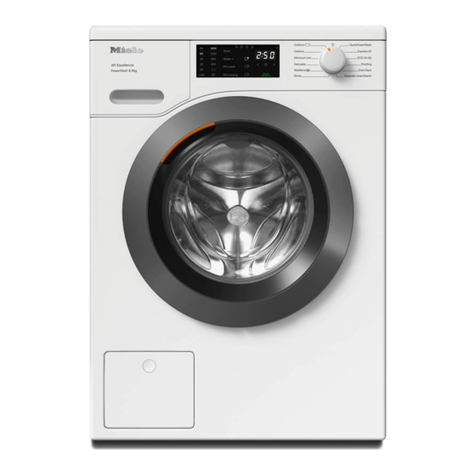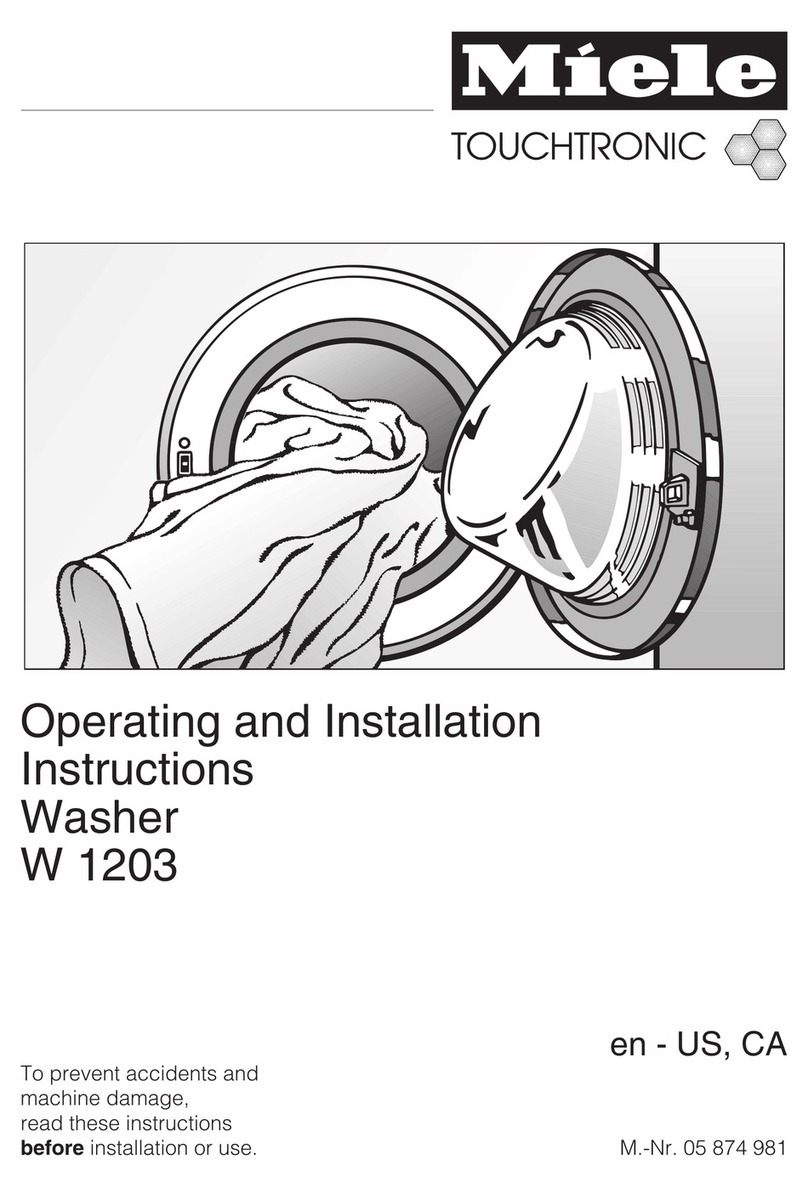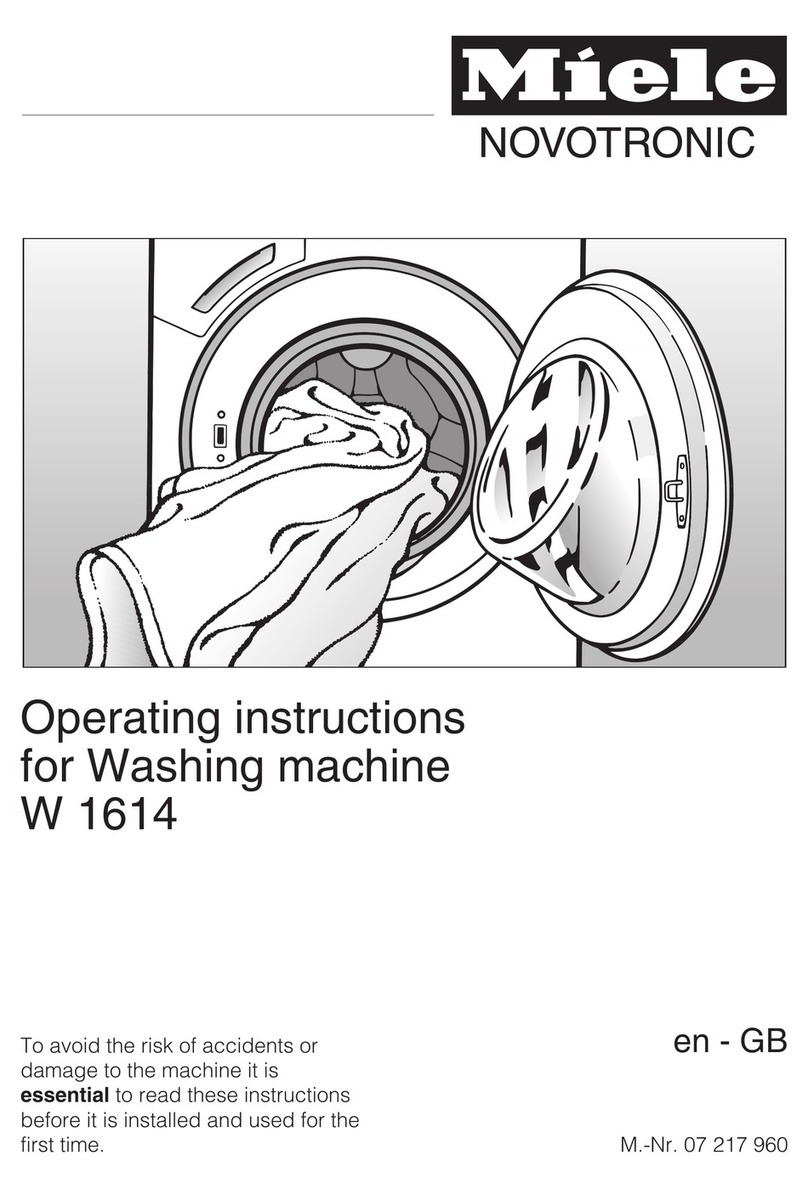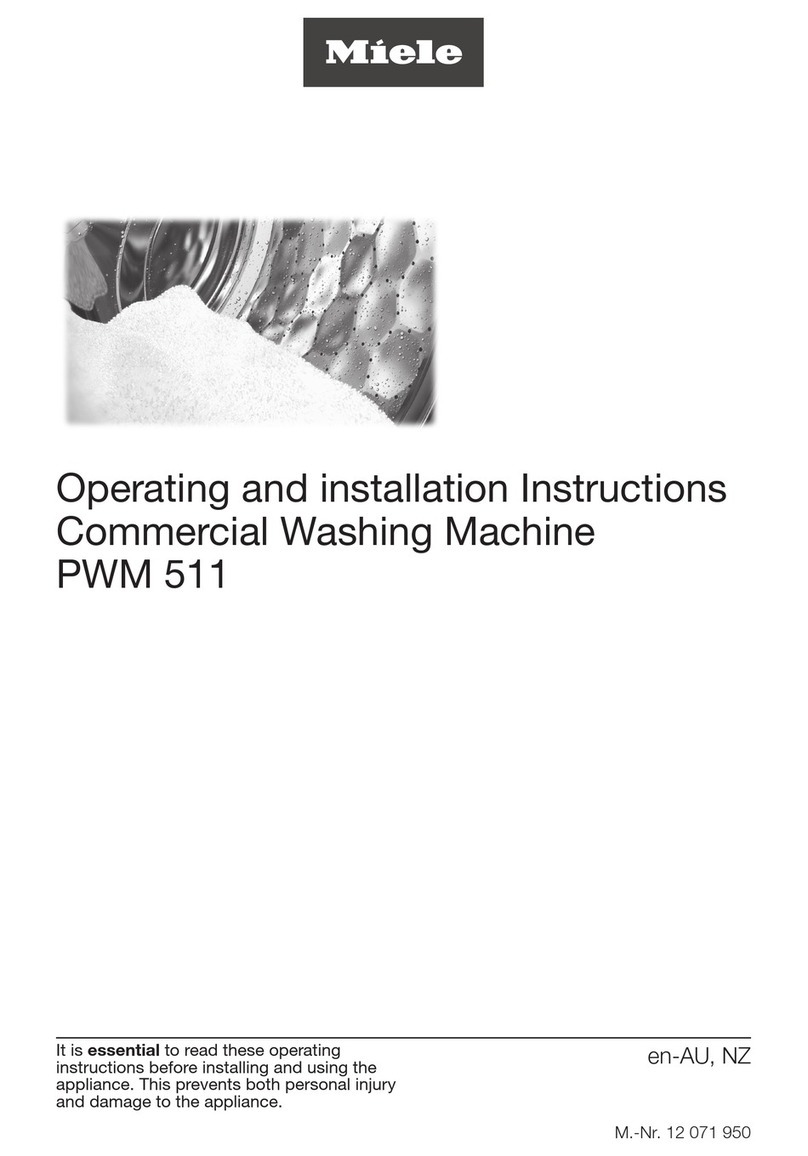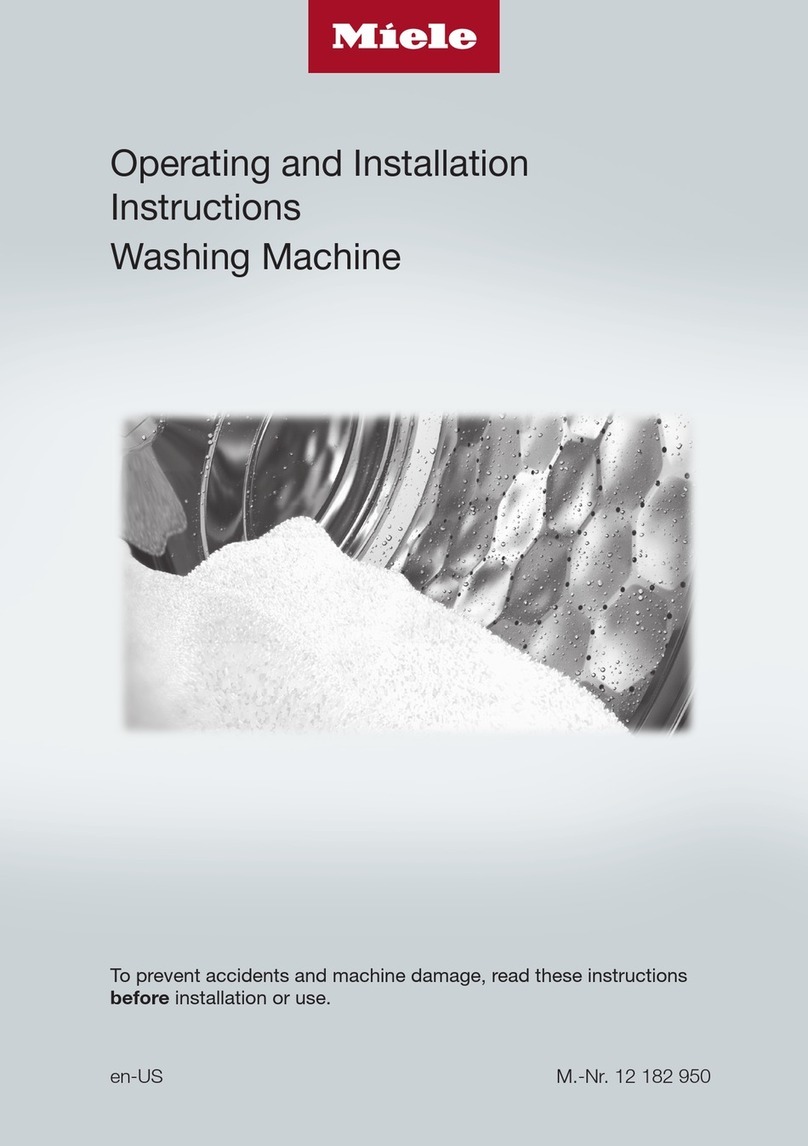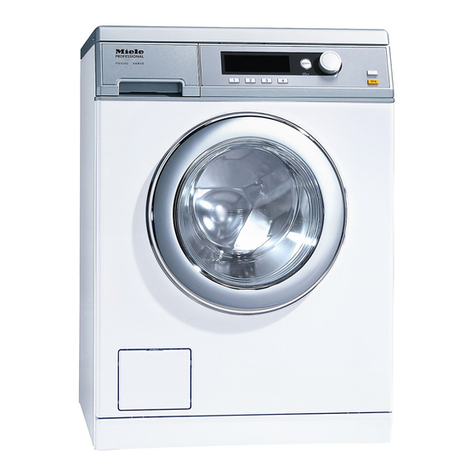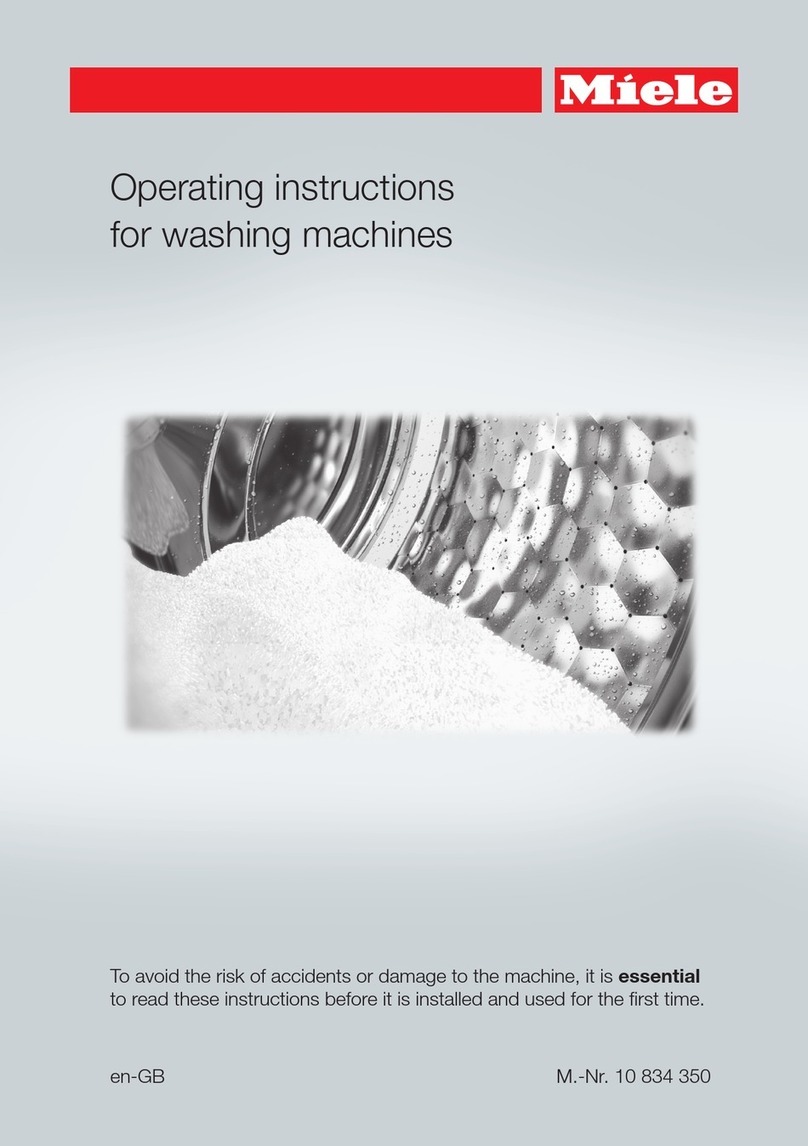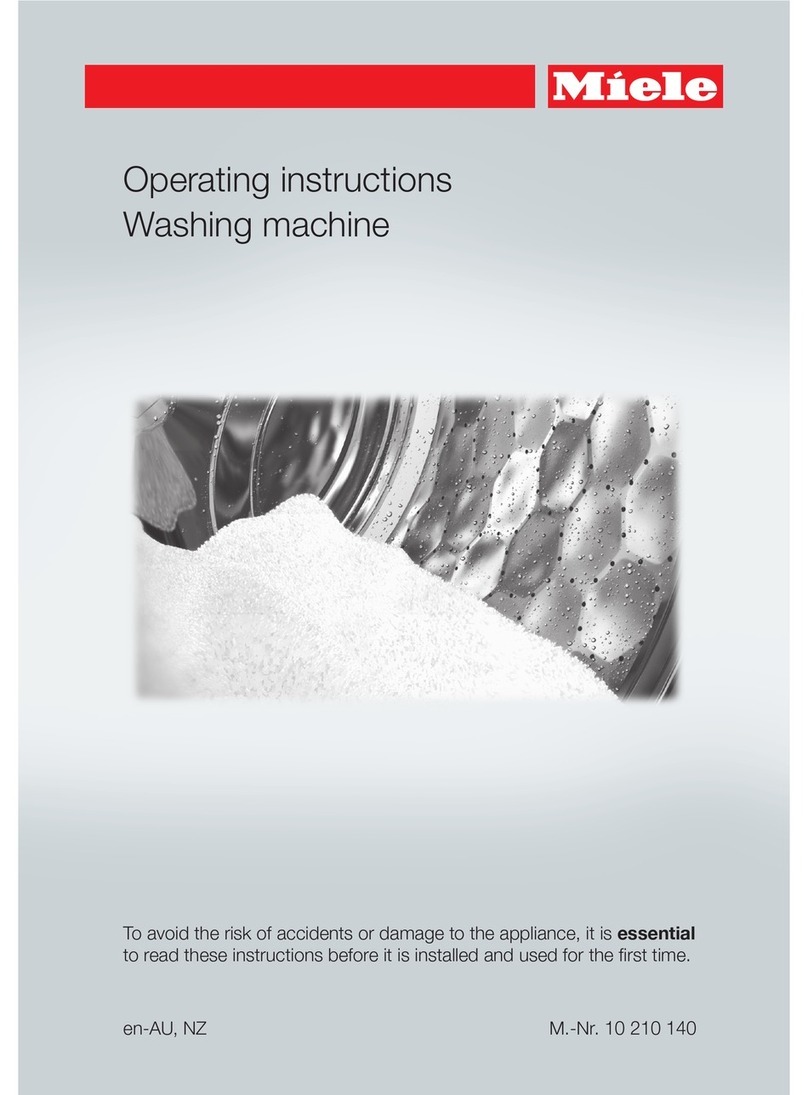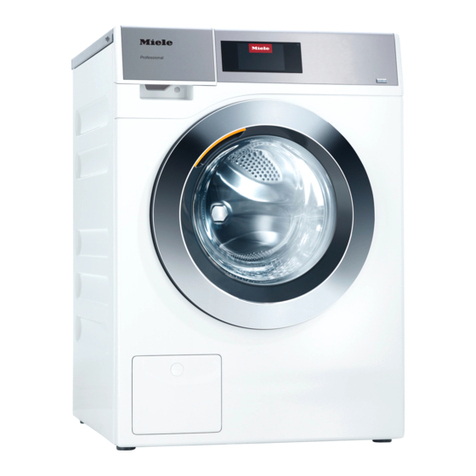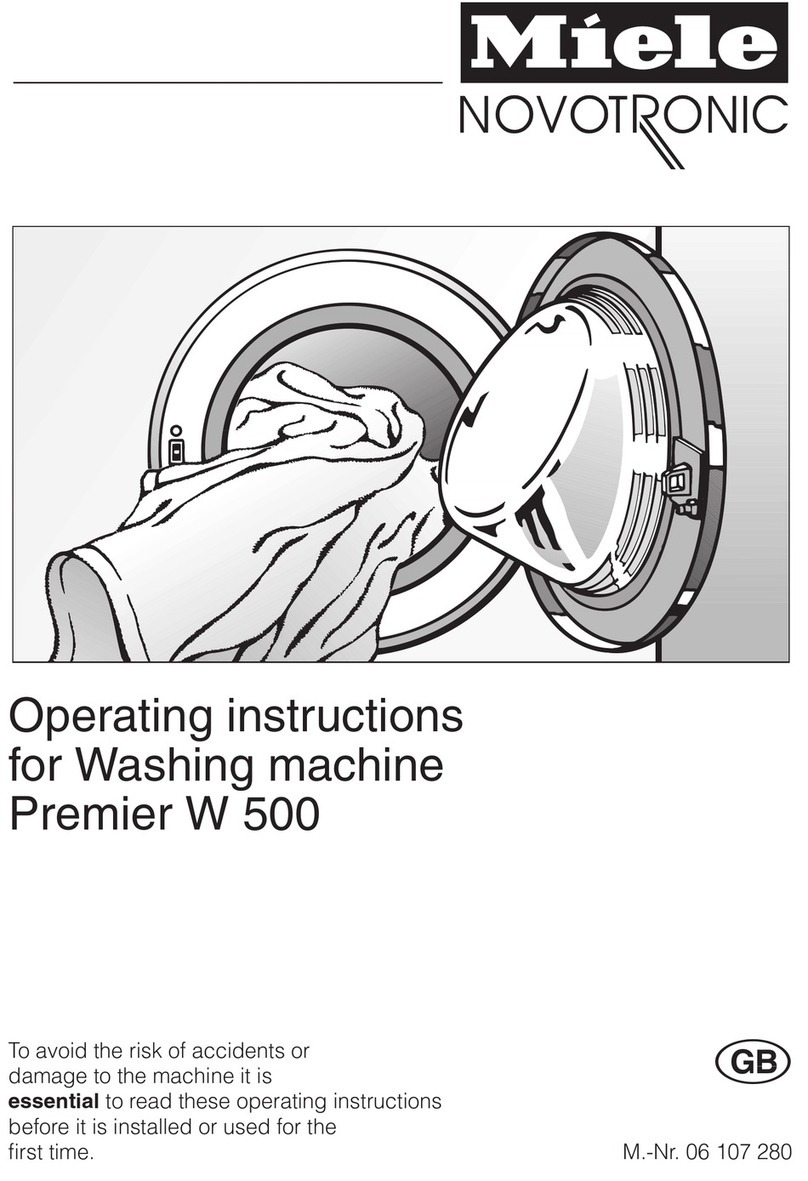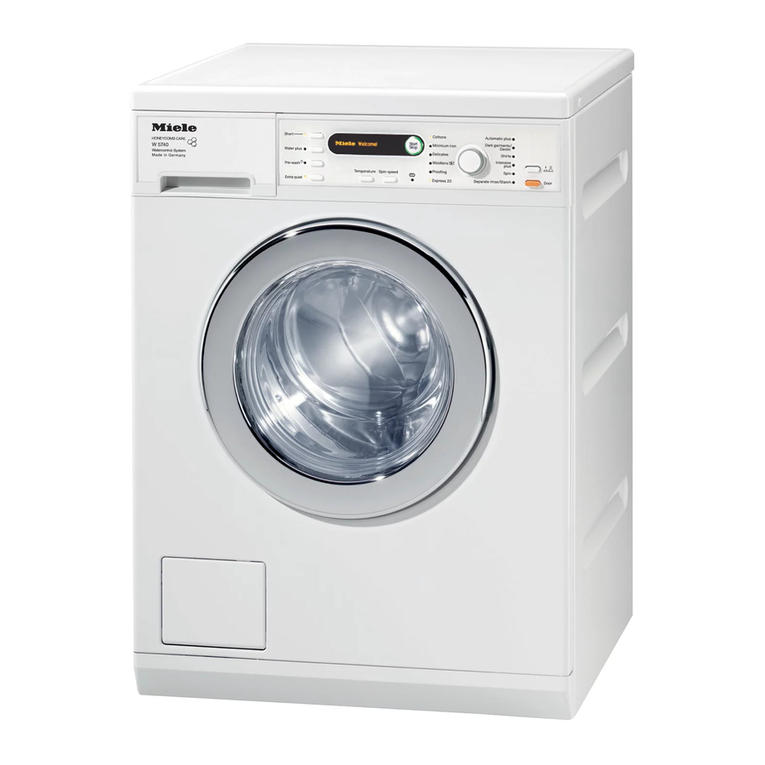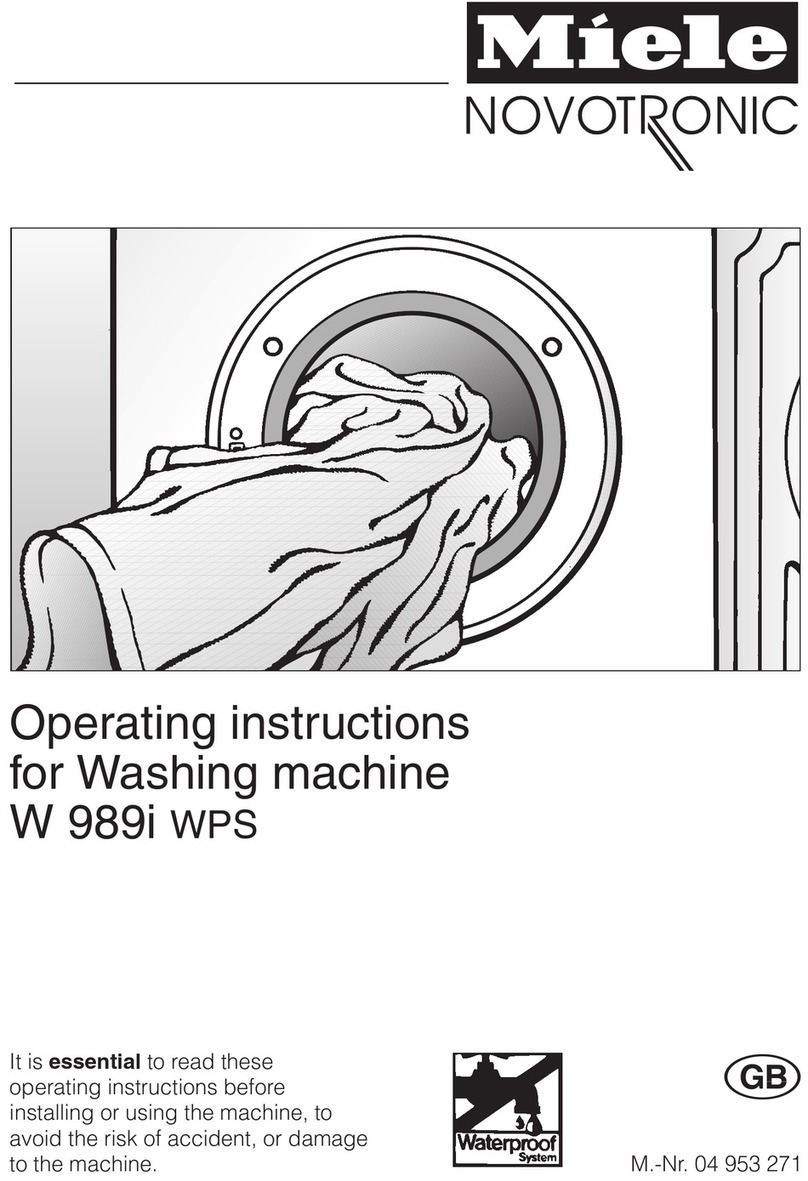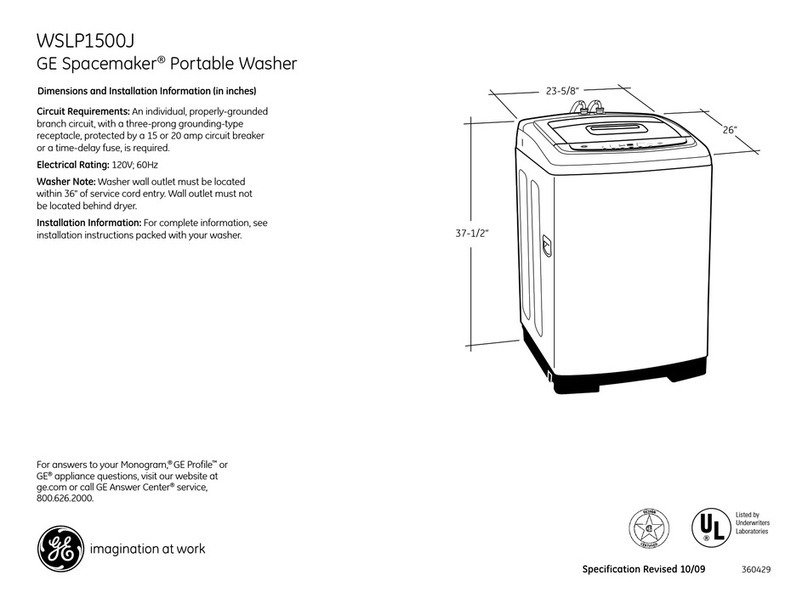Please read the operating instructions
before using this machine for the first
time. They contain important information
about the safety, use and maintenance of
the machine. This will avoid the risk of
accidents and damage to the machine.
Appropriate use of the machine
This washer extractor is only intended for
items of laundry which have not been
impregnated with dangerous or inflammable
substances.
Only machine wash articles which
possess a care label stating they are
suitable for machine washing.
It is the operator’s responsibility to
ensure that the standard of disinfection
in thermal as well as chemo thermal
procedures is maintained (in accordance
with § 18 IFSG) by carrying out suitable
validation tests. These procedures should
be checked on a regular basis, either
thermo-electrically using loggers, or
bacteriologically with bio indicators. The
operator must pay particular attention to
maintaining the correct parameters in the
procedure, including temperature and with
chemo thermal programmes the chemical
concentration used. Disinfection
programmes must not be interrupted, as this
can have a limiting effect on the disinfection
result.
On no account must solvents of the kind
used for dry cleaning be used in this
machine. There may be the danger of fire or
explosion.
Never use or store petrol or petroleum
based substances or any easily
inflammable substances near the machine.
Do not use the machine lid as a resting
place.
Danger of fire or explosion
Technical and electrical safety
The electrical safety of this machine can
only be guaranteed when continuity is
complete between it and an effective
earthing system which complies with local
and national safety regulations.
It is most important that this basic safety
requirement is regularly tested by a qualified
electrician. The manufacturer cannot be held
liable for the consequences of an
inadequate earthing system.
Do not damage, remove or bypass the
safety features and controls on the
machine.
Where there is any damage to the
machine or to the cable insulation the
machine must not be used until it has been
repaired.
Any removable outer panels must be in
place, and all moving or electrical parts
shielded before the machine is operated.
The machine is only completely isolated
from the electricity supply either when
switched off at the wall isolator, or the mains
fuse is withdrawn from the socket.
Repairs should only be undertaken by a
suitably qualified service engineer to
ensure safety. Unauthorised repairs could be
dangerous.
Faulty components should only be
exchanged for Miele original spare parts.
Only when these parts are fitted can the
safety standards of the machine be
guaranteed.
The very best materials are used in the
manufacture of this machine, and every
care is taken in its manufacture. However,
with time, deterioration of parts can occur,
especially with rubber components such as
hoses. Check the inlet hoses regularly for
signs of deterioration and replace in good
time, to avoid leaks and subsequent
damage.
Warning and Safety Instructions
4 M.-Nr. 06 006 842
